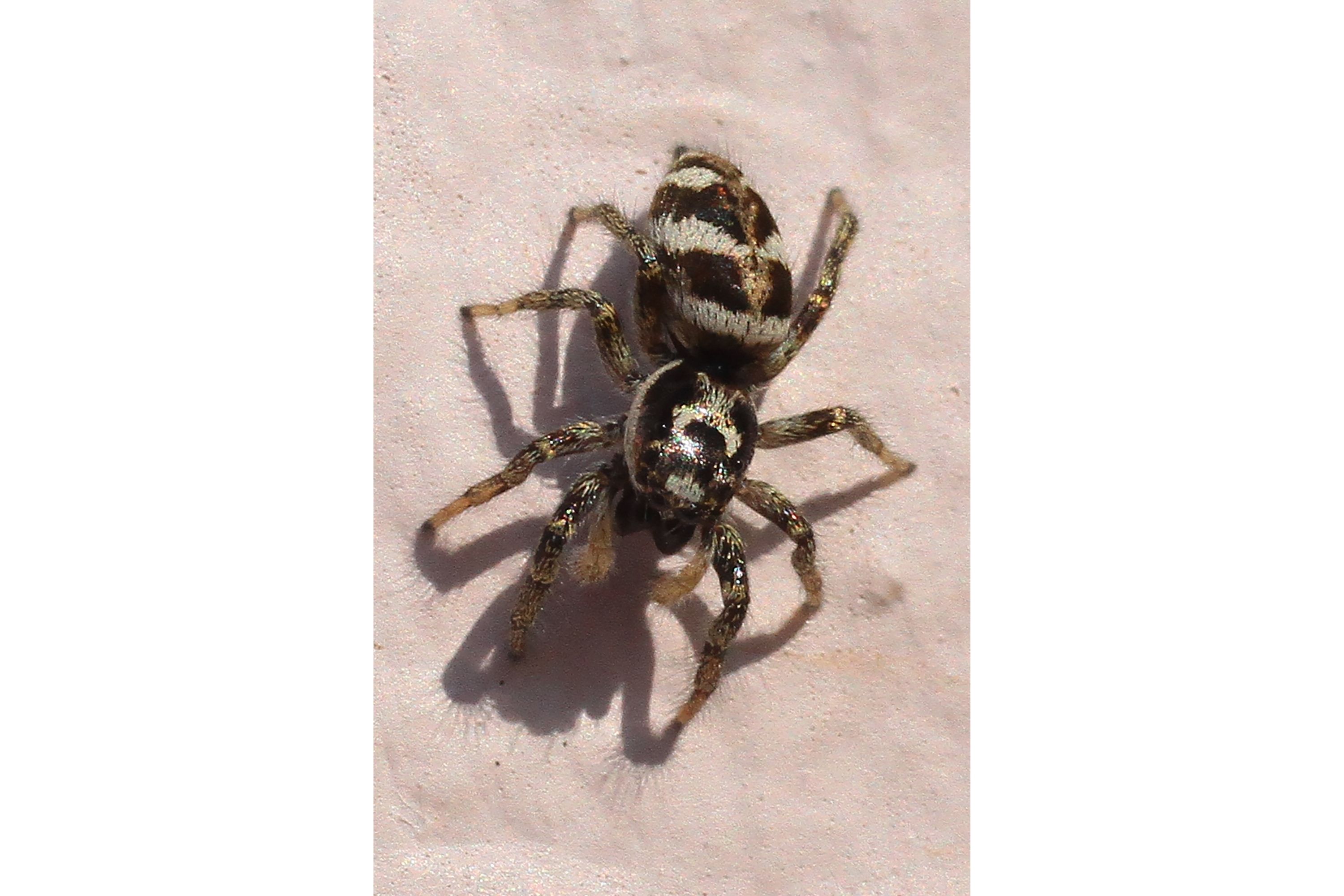Zebra spider
(Salticus scenicus)

Description
The zebra jumping spider (Salticus scenicus) is a common jumping spider of the Northern Hemisphere. Their common name refers to their vivid black-and-white colouration, whilst their scientific name derives from Salticus from the Latin for “dancing”, in reference to their agility, and the Greek scenicus, translating to “theatrical” or “of a decorative place,” in reference to the flashy, zebra-like coloration of the species. Female zebra spiders are 5–9 mm long, while males are 5–6 mm. Male zebra spiders have distinctly larger chelicerae than females. Spiders in the family Salticidae have especially enlarged anterior median eyes (AME), though the anterior and posterior lateral eyes (ALE, PLE) are also large when compared to the very small posterior median eyes (PME). In total there are eight eyes, with the very large anterior median eyes primarily responsible for its excellent binocular vision. These small spiders are black with white hairs that form stripes. Zebra spiders are widespread across Britain, Europe, North America, and North Asia, where they are found throughout the Holarctic. This species is naturally associated with open habitats such as rock faces, shingle beaches and occasionally the trunks of trees. Due to their preference for open, vertical habitats they are often found living in proximity to humans in urban habitat such as on garden fences and the walls of buildings. Spiders have also been known to enter houses, where they can often be found living in the corner of windowsills. Zebra spiders tend to hunt smaller spiders and other arthropods. They have been observed feeding on mosquitos that are almost twice their length. They have also been observed taking on prey items up to 3 times the length of the spider, such as some of the smaller species of moth. Like other jumping spiders, these spiders use their large front eyes to locate and stalk their prey. They move slowly towards their prey until they are close enough to pounce on top of their victim, and their hunting behaviour has been described as cat-like. Using their acute eyesight, they are able to accurately judge the distances they need to jump. They orient towards prey detected by their lateral eyes whenever the angle subtended by such prey exceeds 5.5°. The velocity of the prey is not involved in the determination of reactive distance, but only moving objects elicit orientation.
Taxonomic tree:







